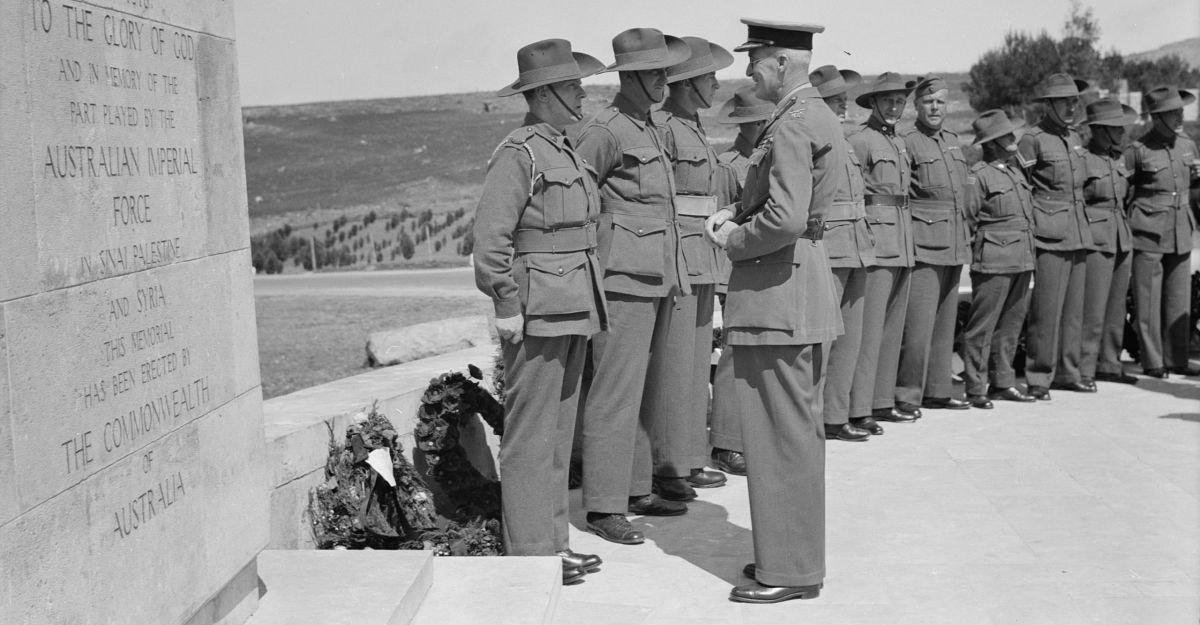My response to Adam Kirsch’s essay “The False Narrative of Settler Colonialism” in The Atlantic is framed by the writings of Patrick Wolfe, my own research and my Aboriginality. Kirsch would call this Indigeneity, which is a term I don’t often use — it’s too simple.
In an essay for the Journal of Genocide Research entitled “Settler colonialism and the elimination of the native”, Wolfe defines settler colonialism as being all about territoriality. He describes it as a logic of elimination — the elimination of anyone unfortunate enough to be in the way. Settler colonialism, he demonstrates, is a structure, not an event.
Kirsch’s narrows and focuses the reader on the best-known examples of settler colonialism, by claiming that “the Palestinian struggle against Israel” has become a focus for “academic and progressive activists” in a “global battle against settler colonialism, a struggle also waged in the United States, Canada, Australia and other countries created by European settlement.” His view that “the settlement process is characterised by European settlers discovering a land that they consider “terra nullius”” and that their “insatiable hunger … fills an entire continent and destroys ‘Indigenous peoples and cultures’”, however, is simplistic. The Americas, South Africa, Australia and Aotearoa New Zealand were long-settled by the time Terra Nullius became a late-nineteenth century rationalisation for invasion.
For the settlers, we were savages, and our lands were deserts waiting for cultivation. Whether that was an act of procreation or a rape depends of course upon one’s perspective. It is also simplistic to claim that Indigenous peoples and cultures were eliminated, as demonstrated by the fact that killings, disease, the taking of children, missions, reserves, incarceration did not suddenly cease. Here in Australia, the Recommendations of the 1994 Royal Commission into Aboriginal Deaths in Custody remain unfulfilled, Closing the Gap is failing, the taking of children continues at an increasing rate. Kirsch’s argument that the Ottoman province of Palestine was not a Terra Nullius when “modern Zionist settlement” began in the 1880s is irrelevant to his case. The issue that Kirsch does not address is that the modern state of Israel was created out of the chaos of World War One. Conflicting British promises to Arabs and Jews when combined with Woodrow Wilson’s aspirations for national self-determination made the modern state of Israel an almost unique example of settler colonialism.
Similarly, arguing that the modern state of Israel is not a settler colony because it occupies an area the size of New Jersey rather than a continent is irrelevant and distracting. Arguing that Israel is “the only Jewish country in the region, among 22 Arab countries, from Morocco to Iraq” is another simplification, ignoring the diversity of the region. The Arab Conquest beginning in the seventh century did not eliminate and replace the people who already lived there — many became forced conversions. The fact that the “Arab population of historic Palestine” quintupled in the decades after 1948, whereas the Native American population of New England collapsed dramatically after English settlement, is not proof that Israel is not a settler colony. Focusing on Palestinian population growth ignores and distracts from the increase in twentieth-century Jewish settlement. And again, to describe Palestinians as Arabs is another gross simplification.
Kirsch claims that Israel “fails to fit the model of settler colonialism” by defying “the usual division between foreign colonisers and Indigenous people” He makes this statement to pre-empt any consideration that the Palestinians may be regarded as Indigenous. Rather than venturing through the door of history, Kirsch attacks the concept of Indigeneity as being “irrational”. He describes Indigenous people as being
not simply those who occupy a territory before Europeans discovered it. Rather, indigeneity is a moral and spiritual status, associated with qualities of such as authenticity, selflessness and wisdom.
Kirsch goes on to claims that the “idea that different people have incommeasurable ways of being and knowing, rooted in their relationship to a particular landscape” is an irrationality, originating “out of German Romantic nationalism” and degenerated into the blut und boden of Nazi Germany. In a convoluted manner, he traces the history of antisemitism to argue that when those who embrace “the ideology of settler colonialism” think of “political evil,” they think of Israel.
Settler colonialism erases the past to build new futures. Theodor Herzl, in his 1896 work, The Jewish State described what a Zionist Israel would look like:
Dull brains might … imagine that this exodus would be from civilized regions into the desert. That is not the case. It will be carried out in the midst of civilization. We shall not revert to a lower stage, we shall rise to a higher one. We shall not dwell in mud huts; we shall build new more beautiful and more modern houses, and possess them in safety.
In the following year, Herzl became the first president of the World Zionist Organisation. A reporter at the conference, observing Herzl walking to the podium to speak, wrote that he “was a scion of the House of David, risen from among the dead, clothed in legend and fantasy and beauty.” The first words he uttered were: “We are here to lay the foundation stone of the house which is to shelter the Jewish nation.”
Herzl was influenced by Nietzsche and his ideas echo Nietzsche’s: “If a temple is to be erected, a temple must be destroyed.” Despite his forward looking, Herzl’s imagery echoes a very old past, and raises the possibility of settler colonialism as recurrence. That is, settler colonists erase not only the Other and memory of the Other, but also any presence or memory of their own past.
*
It is into that past we now venture. A long time ago — but not really that long ago, because most of our mobs have stories about it — the world got colder and drier. The animals looked around to see what caused it and they found Tiddalik the frog, all swollen, wandering the land, drinking all the water. The animals tried all sorts of things to make Tiddalik empty the water out. Eventually, an eel danced in front of him, more and more obscenely, until Tiddalik began to rock and splutter and the water splashed out, lapping all around the animals. When two clever men came to see what was going on they turned Tiddalik into a rock so everyone would know not to be greedy.
Scientists tell us that Tiddalik swallowed the water during the last Ice Age, about thirty thousand years ago, and that the eel began to dance about ten thousand years ago. For thousands of years, Tiddalik shook and heaved the water out and the oceans swept back and forth before things settled.
Mob hold this ancestral story through oral tradition. In that longitudinal climatic belt known as the Fertile Crescent, where the seeds and the animals lent themselves to domestication, memory was held orally until writing swallowed it. Farming and pastoralism, urbanisation, taxation, patriarchal kingships, war and writing sprung into being across the Fertile Crescent as the last Ice Age came to an end. Memories of a “time in which there existed nothing but darkness and an abyss of waters, wherein resided most hideous beings”[1] were originally inscribed onto clay tablets in Sumerian hieroglyphs.
The Babylonian appropriated and copied the story, calling it Enuma elis, or When on High. They replaced the Sumerian supreme being, Elendil, with Marduk, the local god of Babylon. A seventh-century BC copy of Enuma elis was recovered from the ruins of Nineveh’s royal libraries in the mid nineteenth century. Enuma elis begins with the mating of Tiamat, the sea god and Apsu, the fresh-water Tigris and Euphrates as rising sea levels filled the Persian Gulf around ten thousand years ago. Enuma elis is probably the archetype of the inheritance Soap genre in which the Tiamat, the old feminine water-goddess was turned into a serpent to be endlessly slain by masculine heroes.[2] [3]
There is a parallel to the recollection of rising sea levels in Genesis I.2, which describes the Earth as being “without form, and void”. These images are derived from the Hebrew “Tohuw wa Bohuw.” “Tohuw” means a formless waste, whereas “Bohuw” is also a ruin, reflecting the erratic changes in sea levels as the last ice age came to an end.[4]
Around 1200 BC, the old Sumerian “Shatur eli sharrf” – “Surpassing all other kings”, was appropriated by a Babylonian priest and recast as “Sha naqba fmuru”- “He who saw the Deep”, better known as The Epic of Gilgamesh. The word “naqba” may mean all things or the deep/abyss. In modern Arabic, the 1947 Arab-Israeli war is Al naqba, the catastrophe.
In The Epic of Gilgamesh, we are introduced to the narrator, the heroic quest, the flawed hero, the tragic hero and templates for future memorialisers. No longer Inanna’s brother, Gilgamesh was now the son of Ninsun, a minor deity, and only “two-thirds divine and one-third mortal.” While the Epic is about a tyrant demi-god learning humility and accepting his mortality, it is also a narrative of settler colonialism. Enkidu — probably the first Indigenous literary character — was fated to be Gilgamesh’s archetypal self-sacrificing hero’s foil. Enkidu was made by the goddess Aruru, who washed her hands with “a pinch of clay” and “threw it down in the wild,” making Enkidu, the “offspring of silence.” He had no people, no country. He grazed with the gazelles.
Man Friday, Chingachgook, Tonto, Jackey Jackey and Warrigal are Enkidu’s clones. Enkidu’s role was clearly recognised by Humbaba, the guardian of Lord Enlil’s cedar forest, who, before Gilgamesh and Enkidu killed him, mocked Enkidu, sitting before Gilgamesh “like a shepherd, like his hireling.”[5]
For helping Gilgamesh kill the Bull of Heaven Enkidu’s fate was sealed. After Enkidu died, Gilgamesh, fearful of his mortality, roamed the wilderness, failed in his quest for immortality and returned to Uruk, supposedly a contrite, wiser and better king. The settler colonial narrative is Gilgamesh’s legacy.
The Middle East is a torn land. A very, very, long time ago, Africa and Asia began to separate. The Golan Heights mark the one end of a great rift valley that stretches down the Jordan Valley into Kenya. There is substantial research that shows that the place now called Palestine has seen successive waves of settler colonisers sweep across it, never quite erasing the presence of those who came before and stubbornly refuse to go away. Palestinian and Jewish people are not strangers, they share a common ancestral heritage.[6] The future of that place called Palestine lies in a democratic constitution that protects and cherishes the rights and responsibilities of the people who live there and breaks the endless cycle of settler-colonial recurrence. It’s time to heal.
[1] Berossus, a Babylonian priest, wrote a history of Babylonia in Koine Greek during the third century BC. Fragments of Berossus’ Babylonia were recorded in the first century BC by Alexander Polyhistor and in the 4th century AD by Eusebius of Caesea. Isaac Preston Cory, an antiquarian, used these sources for his 1826 Ancient Fragments to explain Babylonian beginnings.
See also Pages 45-46, E. Richmond Hodges (ed.), Isaac Preston Cory, Cory’s Ancient Fragments of the Phoenician, Carthaginian, Babylonian, Egyptian and Other Authors, Reeves and Turner, London, 1876.
[2] Pages 3-10, Alexander Heidel, The Babylonian Genesis, The University of Chicago Press, 1951.
[3] Pages 57-58, A. H. Sayce (ed.), George Smith, The Chaldean Account of Genesis, Sampson Low ,
Marston, Searle, and Rivington, 1880; L. W. King, Enuma Elish: The Epic of Creation, 1902; Pages 160-161, Professor Theodophilus G. Pinches, “The Completed Legend of Bel-Meroch and the Dragon”, Journal of the Transactions of the Victoria Institute, or Phiolosophical Society of Great Britain, Vol. LIX, Published by the Institute, London 1927; Page 18, Alexander Heidel, The Babylonian Genesis, The University of Chicago Press, 1951.
[4] Captain Watkin Tench, Sydney’s First Four Years, Library of Australian History, 1979
[5]Pages 17 and 150 of the Hebrew and Aramaic Dictionary of the Old Testament, James Strong, The New Strong’s Concordance, Thomas Nelson Inc., 1996
[6] A Nebel , D Filon, D A Weiss, M Weale, M Faerman, A Oppenheim, M G Thomas, High-resolution Y chromosome haplotypes of Israeli and Palestinian Arabs reveal geographic substructure and substantial overlap with haplotypes of Jews
Agranat-Tamir L, Waldman S, Martin MS, Gokhman D, Mishol N, Eshel T, Cheronet O, Rohland N, Mallick S, Adamski N, Lawson AM, Mah M, Michel MM, Oppenheimer J, Stewardson K, Candilio F, Keating D, Gamarra B, Tzur S, Novak M, Kalisher R, Bechar S, Eshed V, Kennett DJ, Faerman M, Yahalom-Mack N, Monge JM, Govrin Y, Erel Y, Yakir B, Pinhasi R, Carmi S, Finkelstein I, Reich D (May 2020), “The Genomic History of the Bronze Age Southern Levant”
Image: An illegal settlement in the West Bank, Montecruz Foto (via Wikimedia Commons)



